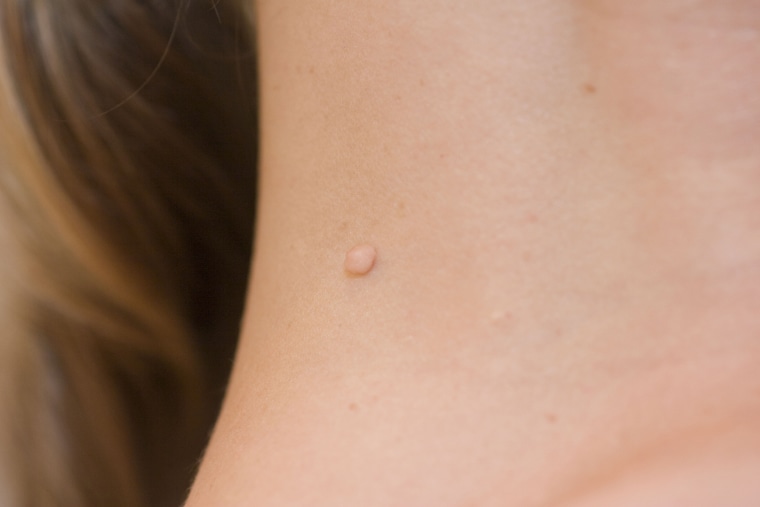Have you ever noticed a random piece of skin hanging from your armpit or on your stomach? They're not acne, they're not warts, they're called skin tags.
Just like pimples, blackheads or bug bites, they're annoying, but they are generally not a cause for panic.
What are skin tags?
Skin tags, medically known as acrochordons, are skin growths that stick out due to a short, narrow stalk.
“Skin tags are fairly common, they usually occur in the neck, armpit, under the breast and groin area, sometimes on the eyelids.” Dr. Melissa Piliang, a dermatologist at the Cleveland Clinic, told TODAY. "They’re little soft tags that sticks off on the skin."
They are more common in middle-aged adults, but often occur in people who are age 30 and older. A kid or teen could have them, but that’s much more unlikely.

Are skin tags dangerous?
The good news is that skin tags are not dangerous, explained Dr. Nada Elbuluk, a dermatologist and clinical assistant professor at the University of Southern California's Keck School of Medicine.
“They’re completely harmless,” Elbuluk said, “but occasionally there will be something that looks like a tag that’s a bit more concerning, like superficial skin cancer.”
That’s why it’s important to see a dermatologist, even if you think you have a harmless skin tag. If it’s itchy, bleeding, uncomfortable or concerns you, make an appointment sooner rather than later, she said. If it’s not bothering you, she suggested bringing it up at an annual checkup.
How to remove skin tags:
Removing a skin tag is a minor procedure that can be done at a regular visit with your dermatologist, explained Dr. Marc Glashofer, a dermatologist in New Jersey who’s an American Academy of Dermatology fellow.
“Usually you can do a little scissor snip, (with) minimal bleeding, sometimes you can freeze them, the cryotherapy causes the cells to die and fall off, or you could cauterize them, which is basically burning them off,” he said.
But if you’ve seen your dermatologist and determined that it’s just a skin tag, the other option is to simply do nothing.
“Assuming that, clinically, it’s a benign skin tag and it’s not symptomatic, meaning it’s not bleeding or painful, you can simply do nothing,” he added.
However, it’s totally understandable if you do want to get it removed.
“It’s very common for people to want to have them removed," Piliang said. "They can be unsightly if for example they’re on the eye, or uncomfortable.”
One thing to note is insurance coverage: In general, insurance providers will cover the cost to remove symptomatic skin tags, or ones that are itchy, bleeding or causing discomfort, doctors said. Most insurance providers, however, will not provide coverage for removal that’s for cosmetic purposes.
Can you remove skin tags at home?
The answer here is pretty simple: Doctors strongly urge against it.
Purchasing at-home products or trying home remedies such as cutting it off using floss or a piece of hair could lead to infection or skin complications in the area, said Elbuluk.
Glashofer likens the procedure to getting your car’s oil changed.
“It’s easy to do … if you know what you’re doing," he said. "But most people still go to have their oil changed."
“It’s not one of those things you want to do at home," he added. "It’s not like the bleeding is profuse, but if you don’t have any training in it, you might cut deeper than you should."
What causes skin tags?
Doctors don’t know for sure, but there are a few theories. The first is that it’s genetic. The second is that it could be caused by skin rubbing on skin.
Piliang said a person’s hormones might also play a role.
“People who are overweight tend to have more of them and people who are diabetic. Insulin can induce growth factors, which is why that can happen,” she said. “Pregnant women, who have more growth factors, are also more likely to have them.”
Maintaining a healthy weight and controlling your blood sugar could help prevent growing skin tags.
Above all, remember that they are normal!



